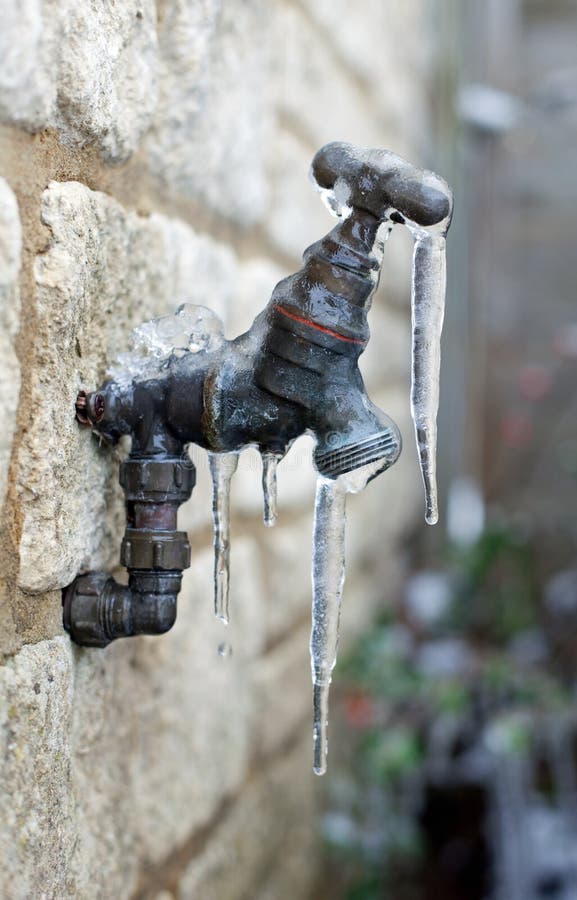Critical Approaches for Avoiding Frozen Plumbing in Winter
Critical Approaches for Avoiding Frozen Plumbing in Winter
Blog Article
We have noticed this article relating to Winter Plumbing Precautions: Preventing Frozen Pipes below on the internet and reckoned it made good sense to quickly share it with you in this article.

Winter can ruin your pipes, specifically by freezing pipes. Below's just how to avoid it from occurring and what to do if it does.
Introduction
As temperatures decline, the danger of frozen pipes rises, potentially bring about pricey fixings and water damages. Recognizing how to prevent frozen pipes is essential for homeowners in chilly climates.
Recognizing Frozen Pipes
What causes pipes to ice up?
Pipelines freeze when exposed to temperatures below 32 ° F (0 ° C) for expanded durations. As water inside the pipes ices up, it increases, putting pressure on the pipe wall surfaces and potentially creating them to break.
Dangers and problems
Frozen pipes can bring about water system disruptions, home damages, and costly fixings. Ruptured pipes can flooding homes and create comprehensive architectural damage.
Indications of Frozen Pipes
Identifying frozen pipes early can prevent them from rupturing.
Exactly how to recognize icy pipes
Try to find reduced water flow from faucets, unusual smells or sounds from pipelines, and noticeable frost on revealed pipelines.
Prevention Tips
Insulating vulnerable pipelines
Cover pipes in insulation sleeves or use heat tape to secure them from freezing temperature levels. Focus on pipelines in unheated or exterior locations of the home.
Home heating techniques
Maintain indoor spaces properly warmed, particularly areas with pipes. Open cabinet doors to enable warm air to flow around pipelines under sinks.
Safeguarding Exterior Plumbing
Garden pipes and exterior taps
Separate and drain yard tubes prior to wintertime. Set up frost-proof faucets or cover outside taps with protected caps.
What to Do If Your Pipelines Freeze
Immediate activities to take
If you presume icy pipes, maintain faucets available to alleviate stress as the ice melts. Utilize a hairdryer or towels taken in hot water to thaw pipelines gradually.
Long-Term Solutions
Structural modifications
Take into consideration rerouting pipes away from exterior walls or unheated areas. Add added insulation to attic rooms, cellars, and crawl spaces.
Updating insulation
Buy high-quality insulation for pipelines, attic rooms, and wall surfaces. Correct insulation aids preserve constant temperature levels and minimizes the danger of frozen pipes.
Conclusion
Preventing icy pipelines needs proactive measures and fast actions. By comprehending the causes, signs, and safety nets, house owners can protect their pipes during cold weather.
6 Proven Ways to Prevent Frozen Pipes and Protect Your Home
Disconnect and Drain Garden Hoses
Before winter arrives, start by disconnecting your garden hoses and draining any remaining water. Close the shut-off valves that supply outdoor hose bibs and leave the outdoor faucet open to allow any residual water to drain. For extra protection, consider using faucet covers throughout the colder months. It’s also important to drain water from any sprinkler supply lines following the manufacturer’s directions.
Insulate Exposed Pipes
Insulating your pipes is an effective way to prevent freezing. Pipe insulation is readily available at home improvement stores and is relatively inexpensive. Pay close attention to pipes in unheated areas such as the attic, basement, crawl spaces, or garage. Apply foam insulation generously to create a buffer against the cold. You can also wrap your pipes in heat tape or thermostat-controlled heat cables for added warmth.
Seal Air Leaks
Inspect your home for any cracks or openings that could let in cold air. Seal any holes around the piping in interior or exterior walls, as well as the sill plates where your home rests on its foundation. Additionally, make sure to keep your garage door closed unless you’re entering or exiting. Leaving it open creates a significant air leak that can lead to frozen pipes.
Allow Warm Air Circulation
During cold snaps, it’s essential to allow warm air to circulate evenly throughout your home. Leave interior doors ajar to promote better airflow. Open kitchen and bathroom cabinets to help distribute heat consistently around the rooms. If you have small children or pets, be sure to remove any household chemicals or potentially harmful cleaners from open cabinets for safety.
Let Faucets Drip
A small trickle of water can make a big difference in preventing ice formation inside your pipes. When temperatures drop significantly, start a drip of water from all faucets served by exposed pipes. This continuous flow helps prevent the water from freezing. Additionally, running a few faucets slightly can relieve pressure inside the pipes, reducing the chances of a rupture if the water inside does freeze.
https://choateshvac.com/6-proven-ways-to-prevent-frozen-pipes-and-protect-your-home/

I hope you liked our article on How To Avoid Freezing Pipes. Thank you so much for taking time to read our article post. I beg you take the opportunity to distribute this content if you enjoyed it. Many thanks for your time spent reading it.
Book Now! Report this page